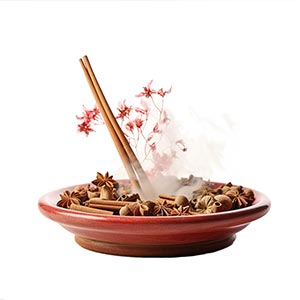Incense is revered in perfumery for its mystical and spiritual aroma. Historically used in religious and ceremonial contexts, incense creates a sense of reverence and tranquility. It is derived from aromatic materials like resins, barks, and oils, which are either burned to release their scent or processed to extract their essence. Frankincense and myrrh are classic examples, known for their rich, smoky, and resinous aromas. The use of incense in perfumery is diverse, encompassing both natural extracts and synthetic compounds. Synthetic versions are often employed to achieve consistency or to accentuate certain aspects of the incense profile. Incense is a key element in oriental, woody, and spicy fragrance families, imparting a sense of depth, mysticism, and ancient allure.
Natural or Synthetic?
Incense, with its distinctive woody and resinous aroma, is incorporated in perfumery both naturally and synthetically. Natural incense, derived from tree resins, is used for its rich and deep scent. Synthetic alternatives, replicating this unique aroma, are often used due to availability and cost factors.
Fragrance Families Incense Most Commonly Found In
Show fragrances that contain Incense as a note



